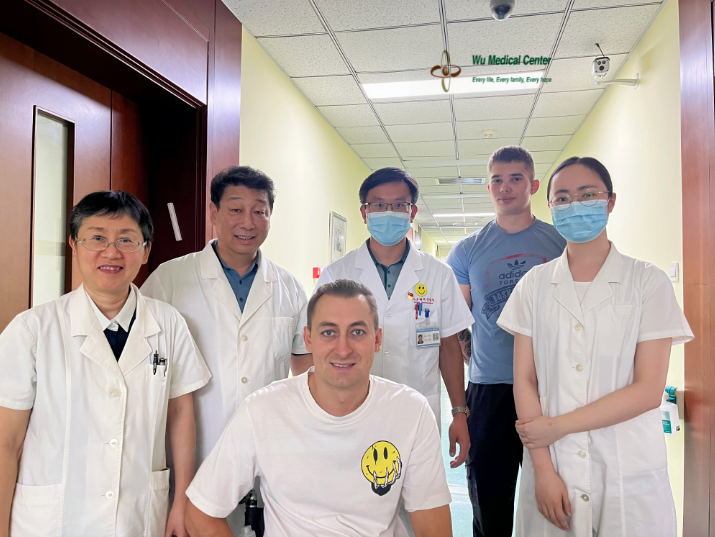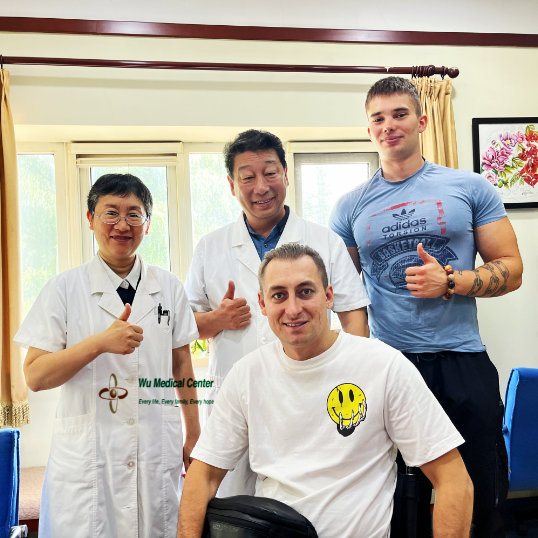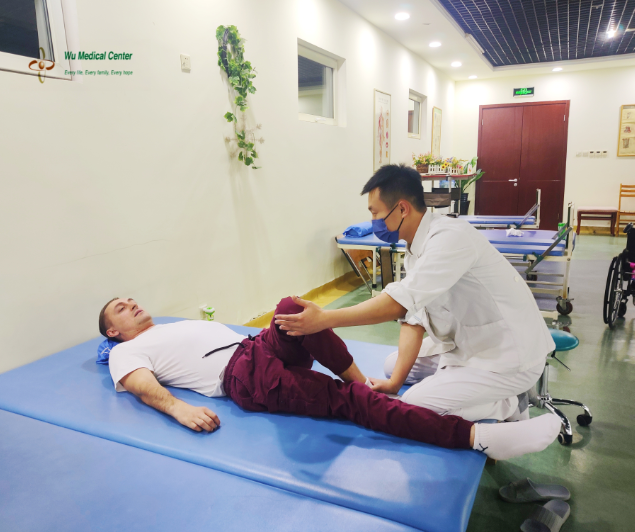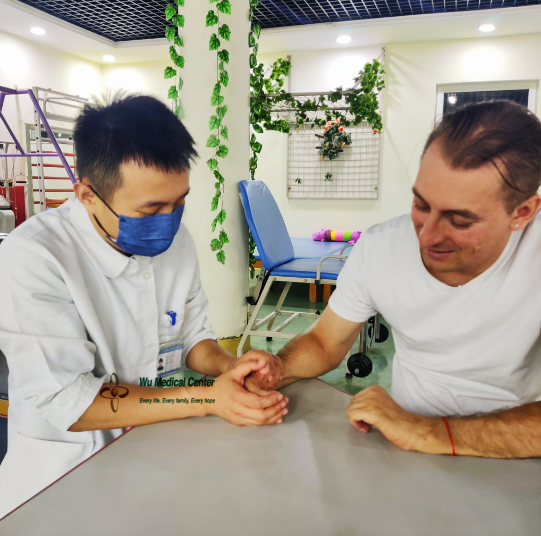Krauchuk Aliaksandr-Sequelae of spinal cord injury-(Belarus)
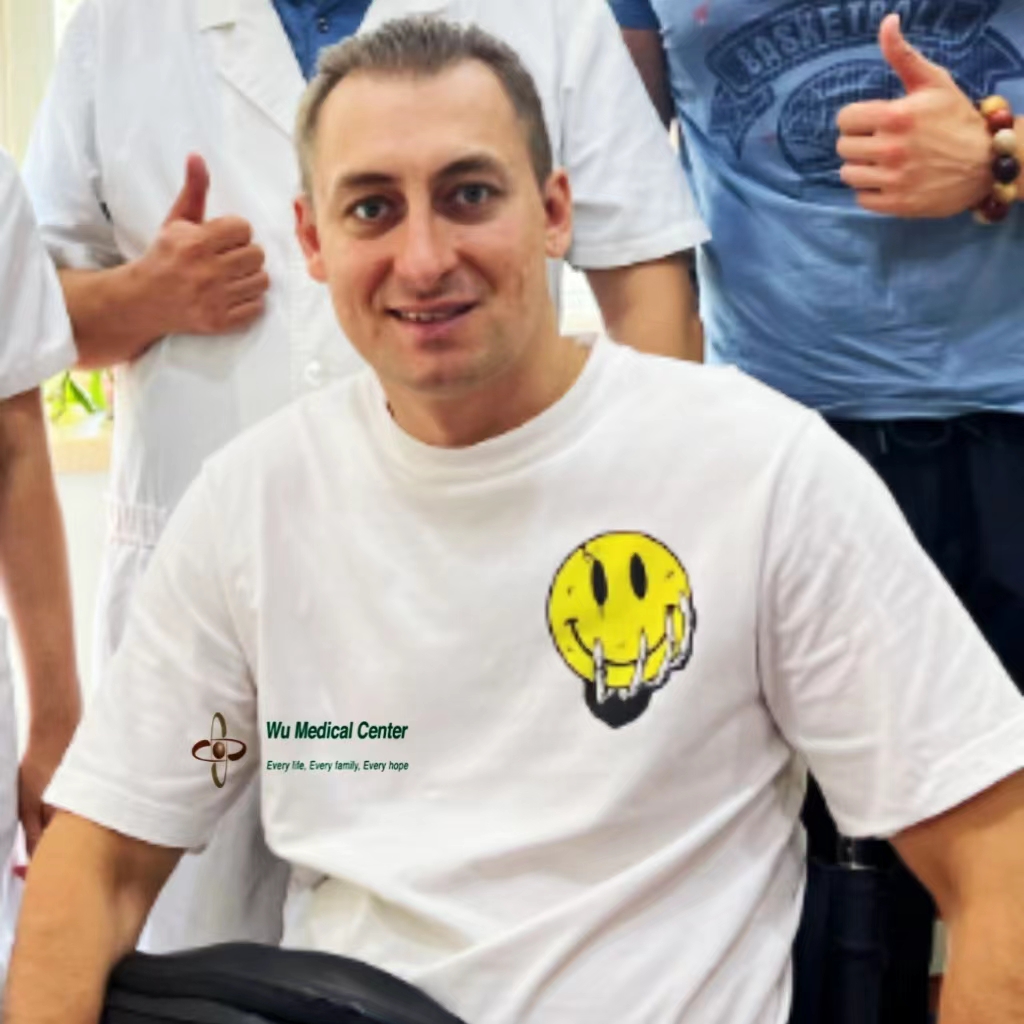 Patient name: Krauchuk Aliaksandr
Patient name: Krauchuk Aliaksandr
Gender: Male
Age: 33 years old
Nationality: Belarus
Disease diagnosis: Sequelae of spinal cord injury
Before treatment:
He was admitted to hospital as "sequelae of spinal cord injury" because of "limb dyskinesia after neck trauma for 6 years". He had no history of diabetes, hypertension, coronary heart disease, hepatitis, tuberculosis, no history of drug and food allergy.
Admission for physical examination:
Blood pressure 114/67mmHg, heart rate 60 beats / min, breathing 18 beats / min. Moderate nutritional status, clear respiratory sounds in both lungs, no rales. The heart sound was strong, the rhythm was uniform, and there was no murmur in each valvular area. The abdomen was flat and soft, and the liver and spleen were not enlarged. There was no edema in both lower limbs.
Neurological examination:
The patient had clear mind, good language, normal ability of memory, calculation and orientation. His bilateral pupils were proper and equal round, diameter 3mm, sensitive to light reflex with full movement of both eyes. The forehead pattern was symmetrical, the tongue was in the center, and showing teeth was not skewed. The neck was soft, turning the neck and shrugging shoulders were OK. Proximal arm muscle strength was grade 5, distal muscle strength was grade 3, left wrist muscle strength was grade 3, left hand grip strength was grade 1, right wrist muscle strength was grade 3, right hand grip strength was grade 1 +. The muscle strength of low back was grade 1. The muscle strength of both lower limbs and feet was grade 0. The muscle tension of both upper limbs was low. The thenar muscles and interpalmar muscles of both hands, and the muscles of both forearms and legs atrophied moderately. Decreased tendon reflex in both upper limbs. The bilateral abdominal wall reflex was not elicited. Left lower limb tendon was hyperreflexia, associated with the left upper limb and face, causing left facial twitching and pain. The tendon of the right lower limb was hyperreflexia. Clonus could be seen in both lower limbs. The superficial and deep sensation below the third segment of the chest decreased on both sides, especially in the foot. Bilateral pathological signs were negative. The bilateral finger-nose and rotation test were clumsy, and the finger-to-finger test and the coordinate movement test of both lower limbs could not be completed because of muscle strength. Meningeal irritation sign was negative.
Treatment process:
The diagnosis of admission was "sequela of spinal cord injury". Neural stem cells and mesenchymal stem cells were given to spinal cord nerve repair therapy, CAST therapy was used to improve circulation, nourish nerve, regulate immunity and other treatment, and comprehensive rehabilitation treatment was given at the same time.
After treatment:
After treatment, the motor function of the patients was significantly improved, the muscle strength of both forearms, wrists and hands increased by 1 grade, grip strength increased by 2 grades, and the flexibility of finger movement increased by 1 grade; the muscle strength of both lower limbs increased by 1 grade, knee joint bending support and adduction and abduction movement of limbs appeared. Waist strength increased by 1 level, he could complete kneeling support. The clonus of both lower limbs decreased significantly, the upper limb band reaction disappeared when stimulating both lower limbs, and the pain was significantly alleviated. The sensitivity of superficial sensation of both toes was higher than that before. The muscle volume of both legs increased significantly. His energy, physical fitness and sports endurance were significantly improved.
